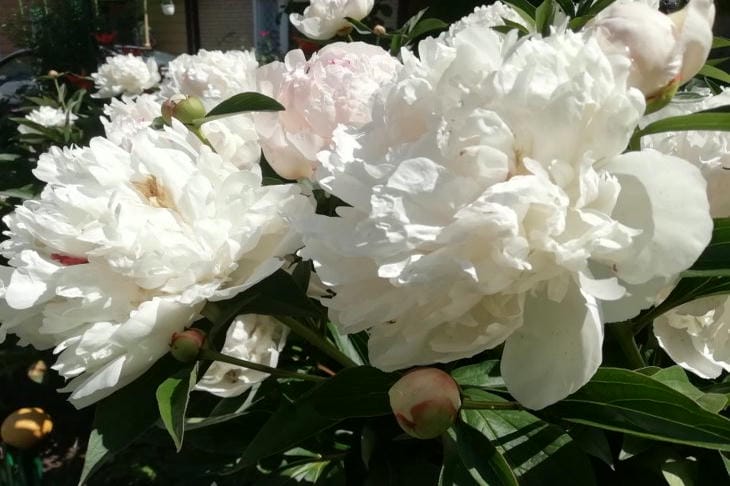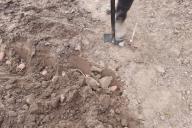Peonies, like royalty in the garden, require special attention and care.
Autumn is the ideal time to replant them.
A properly performed procedure guarantees lush flowering next season and a long life for these magnificent plants.
Choosing the time for transplantation
The optimal period for transplanting peonies is considered to be the end of August - beginning of September. At this time, the plants have already finished flowering, but have not yet gone into a dormant state.
It is important to transplant 3-4 weeks before the first frost, so that the root system has time to strengthen in the new place.

Preparing a plant for transplantation
Before digging up a peony bush, it is necessary to cut the stems, leaving stumps 10-15 cm high.
This approach will make the work easier and will help to determine the location of renewal buds. Leaves are removed completely so that the plant does not waste energy on their maintenance.
Digging up a peony
The peony should be dug up carefully, stepping back from the center of the bush by 30-40 cm. The shovel is driven vertically to a depth of at least 30 cm, so as not to damage the root system. Then the bush is carefully dug up from all sides and removed from the ground.
Dividing the bush
Large, overgrown peony bushes need to be divided. The rhizome is cleared of soil and divided into several parts with a sharp knife or pruning shears.
Each divided part should have 3-5 renewal buds and well-developed roots 15-20 cm long.
Root treatment
Before planting, the peony roots are cut, leaving a length of 15-20 cm. All damaged and diseased parts are removed. To prevent fungal diseases, the roots are treated with a solution of potassium permanganate or a special fungicide.
Soil preparation
Peonies love fertile, well-drained soil. For planting, prepare a hole 60-70 cm deep and 50-60 cm wide.
Drainage from crushed stone or broken brick is placed on the bottom. Then the hole is filled with a nutrient mixture of garden soil, humus and sand in a ratio of 2:1:1.
Planting a peony
The peony is placed in the center of the hole so that the renewal buds are at a depth of 3-5 cm from the soil surface.
Deep planting may result in lack of flowering. The roots are carefully straightened and covered with soil mixture, compacting it slightly.
Watering and mulching
After planting, the peony is watered generously, using 1-2 buckets of water for each plant. Then the soil surface is mulched with peat or humus in a layer of 2-3 cm. Mulch will help retain moisture and protect the roots from freezing.
Post-transplant care
During the first two weeks after transplantation, peonies need regular watering. Then the frequency of watering is gradually reduced.
Before the onset of frost, it is recommended to cover transplanted plants with spruce branches or dry leaves.
Peculiarities of caring for young peonies
In the first year after transplantation, peonies do not bloom, directing all their energy to strengthening the root system.
In order not to exhaust the plant, it is recommended to remove emerging buds. Full flowering will occur in the second or third year after transplantation.








